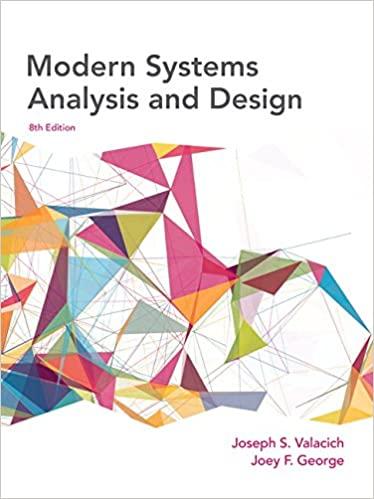Question
1.17. Determine whether these continuous-time systems are causal or noncausal, have memory or are memoryless. Justify your answers. In the following parts, x() is

1.17. Determine whether these continuous-time systems are causal or noncausal, have memory or are memoryless. Justify your answers. In the following parts, x() is an arbitrary input and y() is the output response to x(1): (b) y(t) = e(t) (c) y(t) = (sin f)x(1) 1.19. For each of the systems in Problem 1.17, determine whether the system is linear or nonlin- ear. Justify your answers. 1.20. For each of the systems in Problem 1.17, determine whether the system is time invariant or time varying. Justify your answers.
Step by Step Solution
3.45 Rating (158 Votes )
There are 3 Steps involved in it
Step: 1
117 Determining Causality and Memory b yt et Causality This system is causal Causality means that the output at any given time depends only on the inp...
Get Instant Access to Expert-Tailored Solutions
See step-by-step solutions with expert insights and AI powered tools for academic success
Step: 2

Step: 3

Ace Your Homework with AI
Get the answers you need in no time with our AI-driven, step-by-step assistance
Get StartedRecommended Textbook for
Modern Systems Analysis And Design
Authors: Joseph Valacich, Joey George
8th Edition
0134204921, 978-0134204925
Students also viewed these Electrical Engineering questions
Question
Answered: 1 week ago
Question
Answered: 1 week ago
Question
Answered: 1 week ago
Question
Answered: 1 week ago
Question
Answered: 1 week ago
Question
Answered: 1 week ago
Question
Answered: 1 week ago
Question
Answered: 1 week ago
Question
Answered: 1 week ago
Question
Answered: 1 week ago
Question
Answered: 1 week ago
Question
Answered: 1 week ago
Question
Answered: 1 week ago
Question
Answered: 1 week ago
Question
Answered: 1 week ago
Question
Answered: 1 week ago
Question
Answered: 1 week ago
Question
Answered: 1 week ago
Question
Answered: 1 week ago
Question
Answered: 1 week ago
Question
Answered: 1 week ago
View Answer in SolutionInn App



